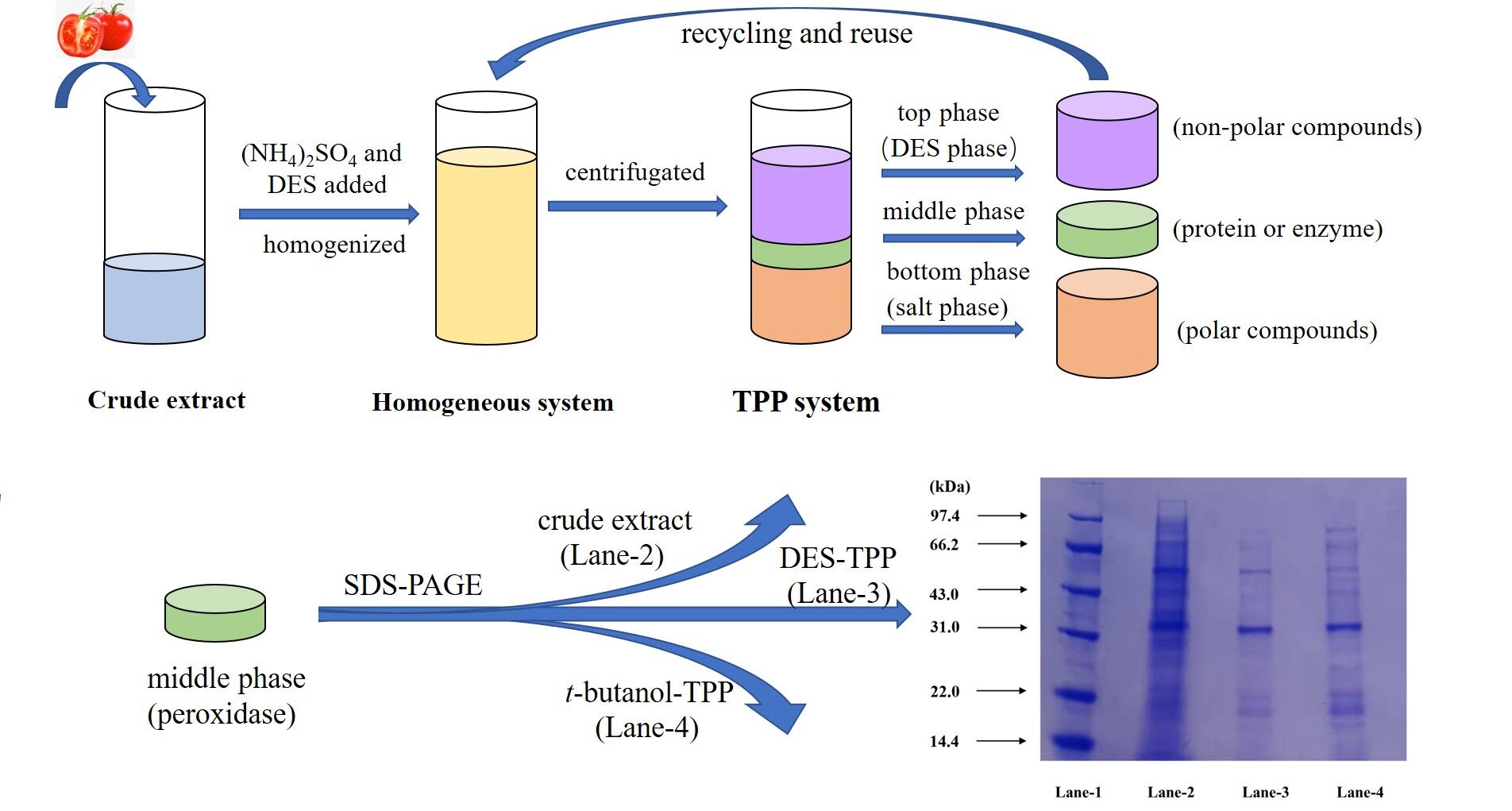
Recently, researchers in the Institute of Bast Fiber Crops, Chinese Academy of Agricultural Sciences(IBFC,CAAS) have constructed a novel three-phase partitioning (TPP) system based on green solvents, deep eutectic solvents (DESs), which can separate and purify tomato peroxidase (POD) more efficiently. This study provides a new strategy for the application of TPP system in green and efficient separation of bioactive substances.
POD has been widely used in food, medicine, and other fields due to its high activity, good heat resistance, and good acid-base stability. Horseradish peroxidase (HRP) is the most extensive commercial source of POD. However, the availability and cost of commercial HRP limit its application. Tomato is a cheap crop widely grown around the world. Studies have shown that tomato POD is similar to HRP, so tomato can be a good source of POD.
TPP technology is a simple, economic, and efficient extraction and separation method, which is widely used in the separation and purification of various bioactive molecules. However, the flammable and volatile t-butanol is mostly used in the traditional TPP technology, which greatly restricts the large-scale application of this technology.
In this study, t-butanol was replaced by environmentally friendly DESs to construct a TPP system. In addition, DESs have good biocompatibility with a variety of bioactive substances. The results showed that the TPP system based on DESs could separate POD more efficiently than the traditional TPP system based on t-butanol. At the same time, DESs could be recycled and reused.
The research was supported by the Science and Technology Innovation Project of the Chinese Academy of Agricultural Sciences and the General Program of the National Natural Science Foundation of China.
The study entitled Deep eutectic solvents-based three-phase partitioning for tomato peroxidase purification: A promising method for substituting t-butanol has been published online in Food Chemistry journal and can be accessed through the following link https://doi.org/10.1016/j.foodchem.2022.133379.

Fig. The formation of TPP system and the comparison of SDS-PAGE pattern of tomato POD before and after TPP.

